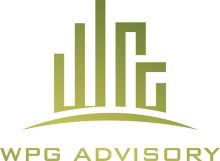Eventually most Aussies will be looking to purchase a property, either as their principal place of residence or as an investment.
There are always pitfalls when buying and whilst some of them are easy spots many can be overlooked, especially by purchasers who have either never been in the game (First time purchasers) or for those that it’s been a while between drinks.
Some of the key data can be confirmed by a competent solicitor or conveyancer, or provided as part of the marketing material of the property, however, the responsibility always falls back onto the purchaser to make sure that they have satisfied themselves that the information is correct. Engaging a property buying agent can also help navigate these complexities, ensuring that nothing important is missed.
Below is a table of some of the initial items we check as part of any desktop investigation into a property of potential interest. If the answers to these enquiries are positive then we start to look more closely at the property’s suitability for a client. This is by no means the ultimate checklist for a complete Due Diligence process, but this information is available at little or no cost, is often publicly available and can be done from the desk/phone.
|
Address |
Make sure it’s the correct property |
|
Title Details |
The last word in correctly identifying the property |
|
Zoning |
Is the property being legally occupied |
|
Land/Strata Area |
Does the marketing match the DP or SP area |
|
Flooding/BushFire |
Is it in a flood or Bush Fire zone – can the property be insured or is insurance expensive, does the property need to be upgraded to meet building regulations, and does this impact or limit access to site. |
|
Heritage/Conservation area |
Does this impact the property, it could impact on use, ability to renovate or redevelop and dictate the potential use of the property |
|
Current Owners |
Who are they and does that name match the contract of sale |
|
Why are they selling |
Vendors motivation may give you the edge in negotiation |
|
Sales History |
Does the property have regular or irregular sales history – what does this mean if it does? |
|
Contamination |
Does the property have a history of potential contamination usage, has it been identified or rectified, could this limit the potential future use of the property or add hidden costs in the future. |
|
Surrounding DA’s and planned developments |
Review these, as they may impact your property directly or indirectly in either a positive or negative way |
|
Site Slope/natural features |
Will this potentially limit or enhance the use of the property |
|
Site Access |
Is vehicular and pedestrian access easy or hard (busy roads, steep sites, narrow street, height limits into car parking area etc) |
|
Lease Details |
If there is a tenant, are they in legal occupation, do they have occupancy rights that may delay your occupation of the property |
|
Current Rent |
Is it at market level, is it being paid in full and on time, |
|
Local Vacancy Rates |
When the property becomes vacant will it take long to re-tenant? |
|
Commercial WALE |
Is it high or low – or what even is it and why does it matter? |
|
What’s the exit strategy |
It’s often easier to buy then sell – what can be done to make this property stand out when the time comes to sell it? |
Spending the time to answer these questions alongside your “wish list” (Client Brief), may save you time, money and emotional stress by ruling properties in or out based on their fundamentals before you get too attached to the property itself.

